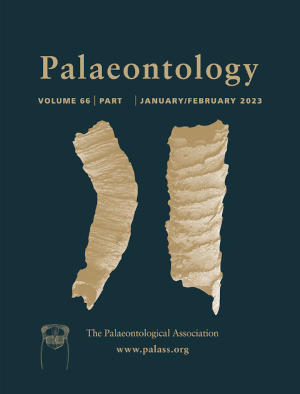Article: Putting the F into FBD analysis: tree constraints or morphological data?
Publication: Palaeontology
Volume:
66
Part:
6
Publication Date:
2023
Article number:
e12679
Author(s):
Joëlle Barido-Sottani, Alexander Pohle, Kenneth De Baets, Duncan Murdock, and Rachel C. M. Warnock
Abstract
Abstract The fossilized birth–death (FBD) process provides an ideal model for inferring phylogenies from both extant and fossil taxa. Using this approach, fossils are directly integrated into the tree, leading to a statistically coherent prior on divergence times. Since fossils are typically not associated with molecular sequences, additional information is required to place fossils in the tree. We use simulations to evaluate two different approaches to handling fossil placement in FBD analyses: using topological constraints, where the user specifies monophyletic clades based on established taxonomy, or using total-evidence analyses, which use a morphological data matrix in addition to the molecular alignment. We also explore how rate variation in fossil recovery or diversification rates impacts these approaches. We find that the extant topology is well recovered under all methods of fossil placement. Divergence times are similarly well recovered across all methods, with the exception of constraints which contain errors. We see similar patterns in datasets which include rate variation, however, relative errors in extant divergence times increase when more variation is included in the dataset, for all approaches using topological constraints, and particularly for constraints with errors. Finally, we show that trees recovered under the FBD model are more accurate than those estimated using non-time calibrated inference. Overall, we show that both fossil placement approaches are reliable even when including uncertainty. Our results underscore the importance of core taxonomic research, including morphological data collection and species descriptions, irrespective of the approach to handling phylogenetic uncertainty using the FBD process.
